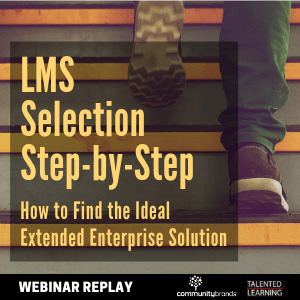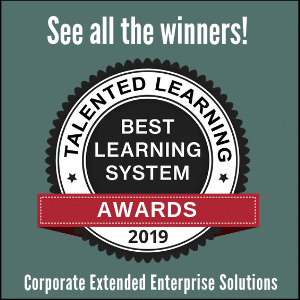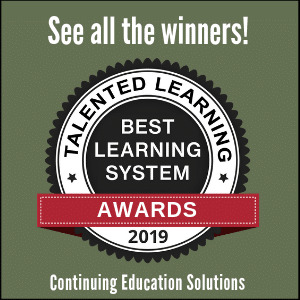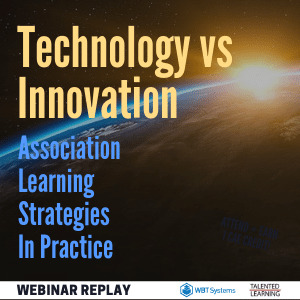#Class A CDL in 5 Easy Steps
Explore tagged Tumblr posts
Text
How to Get Your Class A CDL in 5 Easy Steps
A Class A Commercial Driver’s License (CDL) is the gateway to commanding the road in vehicles like semi-trailers, flatbeds, and livestock haulers. With this license, you’re not just certified you’re career-ready for high-demand jobs that keep the country’s freight moving. To know more continue reading how to get your class A CDL in 5 easy steps.

0 notes
Text
Our ELDT Course Is Approved By FMCSA!
Complete your ELDT course to obtain a Class A CDL with ELDT Inc’s comprehensive preparation plan created by industry experts. The course features in-depth classes on Entry-Level Driver Training Theory Instructions explained in simple terms to enable easy understanding of the curriculum. Study at a pace that suits you, helps you learn in the best way possible, and complete all the 30 modules grouped in 5 areas of training thoroughly. Practice with a giant pool of questions in our database until you are confident that you can tackle the main exam.

Register, study and attempt tests for free. You will be required to pay a fee of $25 only when you download the FMCSA authorized ELDT certification regardless of what your score is. If you do not score the required 80% and do not wish to download the certificate, you can go back and attempt the test again. This certificate is a valid proof of completion of ELDT Theory Training and your next step should be completing your Behind-the-Wheels Training at a driving school listed in FMCSA’s Training Provider Registry.
Preparation with ELDT Prep App.
ELDT Prep App is a mobile application (app) that helps you to prepare for Entry-Level Driver Training online through free ELDT practice test. The app can be accessed and used by both students and driving schools.
The ELDT Certification guidelines are applicable to all those who are:
Obtaining a Class A or Class B CDL for the first time.
Upgrading from a Class B CDL to a Class A CDL.
Obtaining a School Bus Endorsement (S),
All those candidates who are looking for Passenger Endorsement (P), Hazardous material Endorsement (H) for the first time.
Entry-Level Driver Training constitutes Theory Instructions (Knowledge Training) and Behind the Wheel Instructions. A record of Commercial Driving License (CDL) applicants who have fulfilled the ELDT training course is maintained by the FMCSA Training Provider Registry, and only such candidates are qualified to get a CDL, subject to the conditions mentioned above. A minimum score of 80 percent must be achieved by the driver-trainee to qualify the theory assessment.
ELDT Course Features
UNLIMITED REVISION
Access the curriculum and video lectures for as long as the plan period continues.
UNLIMITED TEST ATTEMPTS
Attempt the practice tests as many times as you want until you get your desired result.
RESULT CERTIFICATE
Download an FMCSA authorized certificate after your test attempts for a fee of $25.
MOBILE FRIENDLY
Access the website on your smartphone without any display or performance issues.
COMPREHENSIVE LEARNING
Study all five areas of ELDT Theory Instructions in a thorough but lucid language.
LECTURES FROM INDUSTRY EXPERTS
Learn in-depth from industry expert faculty through pre-recorded video lessons
#ELDT#class A cdl#class A CDL training#commercial driver's license#ELDT Certification guidelines#ELDT Certification#ELDT Course#ELDT Theory Instructions#FMCSA authorized certificate
0 notes
Link
Buy real Malaysian driver’s license online Buy real Malaysian driver’s license online. Reasons you need to buy real Malaysian driver’s license; you’re an eager 17 year old wanting to independently drive yourself, or you’re an expat or international student staying in Malaysia long term or you want to start driving for e-hailing companies like Grab. Before you signup with a driving school, this article will help you understand how to get a driving license in Malaysia, the types of driving licenses and the various fees that are involved. Buy real Malaysian driver’s license for sale
A Real Malaysian driver’s license is required in Malaysia before a person is allowed to drive a motor vehicle of any description on a road in Malaysia under the Road Transport Act 1987, section 26. Under section 26 of the Road Transport Act, an individual must possess a valid driving license before being permitted to drive on the road, or can be prosecuted under section 26. Upon conviction, the miscreant is liable to fines or jail or both. Real Malaysian driver’s license holders are subject to all traffic rules stated in the Road Transport Act 1987. Purchase Real Malaysian driver’s license online
Real Malaysia drivers license (LDL)Buy real Malaysian driver’s license online Real Malaysia drivers license Possessed by learners in driving schools. They must first attend a 6 hour of KPP01 or known as Safety Driving Theory, then a Section I examination or Road Laws and Safety Driving. Starting September 2014, LDL license is issued after the candidate of Section I examination pass their exam without needs to attend Safety Driving Learning Class. Real Malaysia drivers license holders are only permitted to drive cars displaying the L plate owned by driving schools under the supervision of a driving school instructor. For motorcycle learner’s Real Malaysia drivers license holders, they are permitted to ride a motorcycle without a pillion. The Real Malaysia drivers license learner’s may be renewed every 3 or 6 months but the license cannot be possessed for more than 2 years. After the 2 years due date, the Real Malaysia drivers license holders may go to Road Transportation Department (JPJ) to attend of KPP01. we sell Real Malaysia drivers license online cheap.
Buy Real Malaysian license (PDL) Buy Real Malaysian license Possessed by new drivers who have passed all the driving lesson procedures and tests. Buy Real Malaysian license Holders also need to ensure to bring along driving license when driving. New drivers are subject to the 20-point Road Safety System (KEJARA) demerit point system, where points will be deducted according to the types of traffic infractions. Buy Real Malaysian license will be revoked after a probationary license holder accumulates 20 demerit points. Probationary drivers are required to display the probationary license plate (marked with white capital P in square red background) at the front and back of their respective vehicles. A probationary license may be upgraded to a full competent driving license after 2 years, and a grace period of 1 year is given to upgrading the license before the Buy Real Malaysian license holder may need to restart the whole driving lesson procedures. Buy Real Malaysian license cheap
Buy Malaysian driver’s license (CDL) Buy Malaysian driver’s license A full-fledged driving license being upgraded from the probationary license after 2 years. A competent driving license may be renewed after every 1, 2, 3 or 5 years. A grace period of 3 years is given to renew the license before the license holder may need to restart the whole driving lesson procedures. If the competent Buy Malaysian driver’s license (CDL) holder for one license class wants to add another driving license class, he or she does not have to undergo a probationary driving license (PDL) period again. Contact us to Buy Malaysian driver’s license online
Buy real Malaysian driver’s license,Real Malaysia drivers license on sell,Buy Real Malaysian license,Buy Malaysian driver’s license,Malaysia license for sale,buy Real Malaysian driver’s license with credit card,order Real Malaysia drivers license,Buy Real Malaysian license online,Buy Malaysian driver’s license with bitcoin,buy Malaysia license for sale, Buy real Malaysian driver’s license in Oman, Buy real Malaysian driver’s license COD
Vocational Malaysia license for sale The Vocational Malaysia license for sale consists of three types which are GDL, PSV , and Conductor. Goods Driving License (GDL) a license to drive any commercially registered vehicle used for transporting goods such as Rigid Lorries, Articulated Lorries, Panel Vans and other vehicles. Public Service Vehicle (PSV) is another type of vocational license that allows the holder to drive any commercial vehicle used for paying passengers such as Taxis, Window Van and Buses. Starting July 12, 2019 ride-hailing drivers (eg Grab, Uber) must apply for (PSV – Taxi/E-hailing) license. Vocational license must be accompanied with holder’s competent driving license (CDL) and should have the classes of license that is equivalent to his or her competent driving license (CDL). Only applicants with Malaysian nationality and permanent resident are allowed to apply for vocational license. Renewal period allowed is 1 year only and applicants must submit their medical report each time they want to renew. If vocational license expires more than 3 years, applicants need to redo the test. order Malaysia license for sale online.
How To Drive In Malaysia – What To ExpectBuy real Malaysian driver’s license online Because Malaysia is in South East Asia where I am used to chaotic traffic, I expected being a foreigner driving in Malaysia to be really difficult. But actually, it is not that much different to driving at home in Australia, and so I was pleasantly surprised by how stress-free driving in Malaysia as a foreigner is!
The main thing that was different to driving in Europe, US or Australia is that cars are merging and changing lanes and directions all the time and may not indicate. read more
Buy Real Malaysian license online and Real Malaysia license for sale related searches: Real Malaysia drivers license Driving licence in Malaysia Easy Steps To Obtain A Malaysian Driving License Malaysia license for sale Renew Your Malaysia Driving License Online Malaysia Direct Selling License Criteria Buy Malaysian driver’s license Malaysia Business License Business in Malaysia Buy Real Malaysian license malaysia driving license numberBuy real Malaysian driver’s license online with bitcoin malaysia driving license renewal Buy Malaysian driver’s license malaysia driving license class driver license test online Malaysia license for sale cheap Real Malaysia drivers license website Malaysia license for sale online Buy Malaysian driver’s license near me Buy Real Malaysian license with bitcoin Malaysia license for sale legally Buy Malaysian driver’s license with credit card Malaysia license for sale company Buy Malaysian driver’s license in Asia
1 note
·
View note
Text
2020 LMS Trends: An Analyst’s Extended Enterprise Learning Predictions
New year. New decade. No better time to step back and look at the big picture. And today’s learning systems market definitely gives us plenty to consider. But which 2020 LMS trends really deserve your attention?
Based on my work as an independent advisor to learning tech buyers and sellers, I’ve outlined 16 key extended enterprise learning trends and related predictions.
Certainly, other factors are shaping the extended enterprise landscape – and we’ll dig into those as the year unfolds. But now, let’s start with the issues and opportubities at the top of my watch list…
2020 Extended Enterprise LMS Predictions
1) Industry Consolidation Rolls On
Ever since cloud technology burst onto the scene a decade ago, hundreds of new learning solutions have entered the market. These are mostly “specialist” platforms. They differentiate themselves not only through innovative functionality, but also industry-specific expertise, integration capabilities, professional services, accessible pricing and other unique characteristics.

REPLAY THIS WEBINAR NOW!
For years, fresh variations on an LMS theme have been popping up in every imaginable niche. But the industry’s unbridled expansion started to lose steam a couple of years ago, when vendors began seeking growth through acquisition.
This consolidation trend remained front-and-center in 2019, with M&A headlines like these:
Absorb Software Acquires Extended Enterprise LMS Provider, eLogic Learning
Absorb Software Acquires Torch LMS
Absorb Software Acquires Cloud-Based Learning Tech Company, ePath Learning
Access Group Acquires Unicorn, UK’s Leader in Learning Technology Solutions
Besomebody Acquires Pixelbug to Add AI, AR and VR to Its Skills Training Products
Bridgepoint Education Acquires Coding Bootcamp Fullstack Academy
CompTIA Acquires Assessment, Certification and Training Company, Metacog
Degreed Acquires Adepto to Add Skills Insights to Learning Platform
EdCast Acquires Leapest, Online Marketplace for Corporate Training
Engagedly Acquires eMentoring Solution Provider, Management Mentors
Instructure Acquires Portfolium to Build Stronger Ties Between Students and Employers
Learning Pool Acquires HT2 Labs, Maker of Learning Locker LRS and Curator LXP
Surgent Expands into Healthcare Professional Education Market Through Acquisition of PharmCon
Thoma Bravo Acquires Instructure, Maker of Canvas and Bridge LMS Platforms
Thompson Reuters Acquire HighQ Legal Collaboration Platform
Transforce Buys The CDL School, The Nation’s Premier Commercial Truck Driving School
Wiley Acquires Knewton, a Provider of Affordable Courseware and Adaptive Learning Technology
2020 LMS TRENDS PREDICTION Despite ongoing consolidation, the learning systems market as a whole will continue to grow at a rapid pace. And as vendors focus more heavily on gaining market share dominance, buyers should prepare for further M&A confusion, uncertainty and disruption.
Service continuity is always a top LMS purchasing concern. But now, selecting the right partner with longevity is more important than ever.
2) Talent Management LMS Platforms Struggle With Extended Enterprise
Old-guard talent management LMS providers are in a quandary. You know the names – Cornerstone, Oracle, Saba Software, SAP SuccessFactors, SumTotal Systems and Workday. They offer powerful employee learning management systems that are integrated with broader talent management suites.
In comparison to specialized extended enterprise solutions, these vendors rarely (if ever) spend R&D dollars on pure extended enterprise innovation. And it shows.
Old-guard LMSs do compete for extended enterprise opportunities, and sometimes they win. But success is limited mostly to highly complex scenarios where organizations must serve both employees and external audiences, and advanced HR/compliance functionality is mandatory.
On the other hand, these systems are often considered too powerful, costly and unfocused for pure extended enterprise deployments, or for SMBs that need to serve employees and external audiences with a single LMS.
2020 LMS TRENDS PREDICTION Talent-suite LMS vendors will continue to get their extended enterprise clocks cleaned while they struggle to land a diminishing number of large-scale employee-focused opportunities.
3) Specialists and Cloud LMS Vendors Win the Extended Enterprise Race
Which specialized LMS vendors are stealing thunder from big-name talent-suite LMS vendors? Good question.

RSVP FOR OUR JANUARY WEBINAR!
Strong contenders include pure-play extended enterprise solutions like BlueVolt, Community Brands, Learndot, NetExam, Skilljar and Thought Industries. But because these platforms are designed specifically for external audiences, they may be too limited for some scenarios.
This is why we see increasing interest in cloud LMS platforms that are flexible enough to support any type of enterprise-class solution – internal, external or a combination of audiences. Leaders in this category include Absorb, Adobe, Docebo, LearnUpon, Litmos and TalentLMS.
These vendors (and many more) offer modern, turn-key solutions that are highly engaging, affordable and scalable. So when LMS buyers compare these solutions with talent-suite platforms, the choice is easy.
2020 LMS TRENDS PREDICTION This year, talent-suite LMS vendors will still focus on employee-specific business needs, while the rest of the LMS industry feasts on an abundance of extended enterprise opportunities.
4) Customer Education Remains a Golden Ticket
Try to name a corporation without customers. Good luck! That’s why customer education is such a hot segment of the extended enterprise universe.
Training now plays an essential role in attracting new prospects, converting them to customers, empowering them to use products successfully, convincing them to increase product use over time and encouraging them to become brand advocates.
It’s a fact that educated customers are more profitable customers. Training is proven to reduce churn, increase retention and improve satisfaction. So, what business wouldn’t want to achieve measurable benefits like these?
2020 LMS TRENDS PREDICTION Corporations that don’t invest in customer education will lose many of those customers to competitors who make education a priority.
5) The Association LMS Segment Becomes Even More Distinct
For years I’ve said that associations are a unique LMS segment. Now, winning business from professional associations is difficult for generalist cloud LMS providers and impossible for talent-suite vendors.
That’s because innovative continuing education specialists are leading the way. For example, BenchPrep, Blue Sky eLearn, Community Brands, EthosCE, WBT Systems and Web Courseworks have made significant inroads in this segment.
All of these vendors bring tremendous domain expertise, along with support for certifications and blended learning experiences, integration with association management systems, B2C and B2B ecommerce capabilities and pricing strategies designed specifically for non-profit organizations.
2020 LMS TRENDS PREDICTION The association LMS segment will become more clearly defined, as consolidation continues to narrow the number of vendors in this space.
6) B2B Commerce is an LMS Innovation Hot Spot – With Good Reason
When we began analyzing this market six years ago, many vendors thought they could create the perfect extended enterprise solution by adding a shopping cart and content pricing to their existing employee-focused LMS. Times have changed!

SEE THE WINNERS NOW!
Now, LMS buyers expect sophisticated B2B capabilities for bulk content sales to resellers, corporate partners, customers or corporate association members.
Bulk sales functionality is important because content development costs are fixed. It makes strong economic sense to package and sell every piece of content in as many ways as possible before they become dated.
To support this strategy, ecommerce-savvy LMS vendors now incorporate automation that makes it easy to create branded customer sites, populate them with pre-purchased content and promote relevant selections to users with CRM and marketing automation integrations.
They also deliver content instantly through advanced transactional capabilities such as pre-assigned tokens. In addition, visual dashboards now make it easy for administrators to monitor individual and aggregate training progress, licensing usage and even ROI.
2020 LMS TRENDS PREDICTION As training businesses strive to squeeze even more “juice” from every piece of content, ecommerce LMS providers will further enhance and automate their platforms in useful new ways.
7) Training and Marketing Lines Blur Further
Way back in early 2014, I noted that extended enterprise training professionals are a hybrid breed. I called them “instructional marketers.”
Since then, the overlap between instructional specialists and marketing professionals has become even more pronounced, and the need for cross-disciplinary training can no longer be ignored.
This kind of cross-training isn’t formally available from universities or employers, so individuals need to educate themselves. Fortunately, it’s not too hard. I did it.
Start by developing strategic know-how in market segmentation, competitive analysis, customer journey mapping, content marketing and product positioning. You’ll find excellent guidance from sources like Content Marketing Institute and MarketingProfs, along with online courses from sites like Coursera, Digital Marketing Institute and LinkedIn.
It’s equally important to develop hands-on skill with top digital marketing tools. Leading vendors typically offer free training to all. Examples include:
Customer relationship management systems (Hubspot, Infusionsoft, Salesforce)
Email and campaign management platforms (Constant Contact, Drip, MailChimp)
SEO and pay-per-click ad management tools (Google Analytics, SEMrush, WordStream)
Data integration software (Automate.io, IFTTT, Tray.io, Zapier)
2020 LMS TRENDS PREDICTION If instructional specialists don’t embrace the marketing side of learning strategy, marketing folks who gain instructional design and content expertise will move the ball forward. It’s not a question of if, but when. And progress is already past due.
8) Integration, Integration, Integration
For successful business results, extended enterprise learning platforms must be integrated with an organization’s broader tech stack. Integrations are critical because they ensure that an LMS seamlessly “snaps” into your ecosystem so it can leverage available data and functionality.

SEE THE WINNERS NOW!
However, integrations are not created equal. Generally, there are two approaches:
• Custom integrations These are designed and built on top of whatever APIs an LMS vendor makes available with its platform. They come with initial set-up costs and ongoing maintenance fees.
• Productized integrations Increasingly popular, these pre-built connectors are available as standard LMS functionality. They’re activated simply by entering a code from the target application. Common examples include:
Marketing automation
Customer relationship management
Customer service management
Data integration software
Virtual classrooms
Ecommerce platforms
Learning record store
Content authoring
Gamification
Proctoring
Finance
Fulfillment systems
SEO
2020 LMS TRENDS PREDICTION Adoption of productized integrations will accelerate rapidly as organizations abandon the concept of custom integrations.
9) Skills and Competencies are Back Again
Skills and competencies management is the training industry’s “white whale.” For the entire 25 years I’ve worked in this industry, we’ve been chasing this elusive beast, with little success.
The concept sounds promising enough:
Assign appropriate skills to each job role in your organization.
Create relevant training content for each role, so employees can develop the necessary competencies to perform effectively.
Include evaluation tools so employees and their managers, peers and customers can rate their performance.
Add robust reporting to track individual and collective progress.
For decades, talent-suite platforms have offered this kind of functionality. But most organizations never even touch these features. Why?
Developing an accurate skill profile for every role takes a tremendous amount of time and effort. Plus, mapping and updating training content for each of those skills is even more time-consuming and difficult. As a result, few projects ever even get off the ground. And those that do often implode from their own weight.
At last, however, we’re seeing several promising breakthroughs on this front:

REPLAY THIS ON-DEMAND WEBINAR
Rather than relying on individual employers to create and manage their own skills models, solution providers like CrossKnowledge, Degreed, LinkedIn and Schoox are predefining competency frameworks and mapping their training content to these models.
Also, associations are leading the way with targeted industry skills models, so members can manage their professional development throughout each stage in their careers.
2020 LMS TRENDS PREDICTION Both of these innovative approaches to skills and competencies will be more widely embraced, as employers abandon their DIY obsession of yesteryear in favor of more highly leveraged solutions.
10) Open Source Gains Legitimacy in Extended Enterprise Learning
Over the years, open source has become associated with strength in the academic LMS space. But this perception is rapidly changing, as platforms like Totara, Moodle Workplace and Open edX make a serious dent in the corporate extended enterprise marketplace.
Why? Because these systems are robust, highly flexible and generally provide high-end capabilities for a lower total cost of ownership than many commercial systems. Plus, they’re configured, deployed and supported by partners who offer specialized expertise in every imaginable market niche. Examples include eThink Education, Extension Engine, Kineo, MindQuest Learning, Raytheon Professional Services, Remote Learner and Synegen.
Open source is particularly attractive for extended enterprise scenarios because licensing fees are usually non-existent. In other words, a training business can scale rapidly without incurring any incremental licensing costs. This means that more of the budget can be invested in content and marketing that move a business forward.
2020 LMS TRENDS PREDICTION Look for much broader adoption of open source as a backbone for large-scale, corporate extended enterprise learning solutions, as decision-makers recognize the benefits of this approach.
11) Differentiation Matters More Than Vendors Think
As an analyst, I’ve personally seen hundreds of learning systems demos. And as a recovering LMS sales guy, I constantly wonder why vendors choose not to lead with their unique strengths. The answer may sound surprising, but too many vendors don’t accurately recognize their key differentiators!
It’s not easy for any vendor to calibrate others’ capabilities accurately. The market is confusing, life is busy and public information is often incomplete or outdated. As a result, vendors are more in-the-dark than you (and they) would think.
In presentations, I always ask vendors to describe the business problem they solve and the kind of customers who gain the most value from their systems. Yet too often, these discussions focus on “me too” features, while discounting capabilities that distinguish their platforms. For example, nearly every vendor emphasizes its modern user interface and instant access to content (minimal clicks), even though this kind of functionality is now commonplace.
Perhaps they’re too close to see what seems obvious to me.
2020 LMS TRENDS PREDICTION Buyers and sellers, alike, will increasingly turn to independent research sources for help in understanding the dynamics of the LMS landscape and the position of individual vendors. Fortunately, that means job security for me.
12) The Learning Experience Platform Niche Remains Visible But Limited

REPLAY THE WEBINAR NOW!
Learning experience platforms (LXP) like Degreed, EdCast, Filtered, Fuse, Percipio and Valamis have made quite a splash. An LXP is a powerful aggregation tool that provides a single point of access to relevant content from various systems. This has tremendous value in organizations with multiple learning systems and other content sources.
LXPs have definitely taught clunky LMSs a valuable lesson about how to up their game in user interface design and content personalization. They’ve rekindled interest in skills development and real-time performance support.
But it’s important to understand that an LXP is not an LMS. For example, LXPs don’t manage compliance, training assignments or scheduling deadlines.
What’s the bottom line for buyers? Most modern cloud LMS platforms now include LXP-level functionality. So if you have only one LMS, adding a third-party application is probably overkill. And if you’re purchasing your first learning system of any type, you’re likely to need a full LMS.
However, if you have multiple employee LMSs and other content sources (as many larger organizations do), an LXP is a must-have.
2020 LMS TRENDS PREDICTION Extended enterprise interest in standalone LXPs will fade, as LMS platforms further improve their experience design and personalization functionality, and as talent-suite vendors enhance their front-end and integration capabilities.
13) AI Is Still On Its Way, But Don’t Wait Up
Most vendors I interview claim that their products include some level of machine learning or artificial intelligence. However, I’ve found that these capabilities are still fairly limited.
On the backend, reporting and analytics automation is where AI is making the most progress. And in terms of user experience, AI-powered content recommendations are improving learning engagement.
For example, suggested content can reflect a user’s professional interests, training history and progress, media preferences and preferences of a user’s peers. Even data from external systems (like a CRM) can be factored into the mix.
Although these advances are promising, vendors remain slow to discuss their AI “special sauce” in detail. Plus, it’s still impossible to see AI or ML at work when evaluating an LMS platform, because sufficient data is never available in a sales environment. Convenient!
2020 LMS TRENDS PREDICTION Artificial intelligence and machine learning will increasingly influence learning content and systems. However, I recommend that buyers proceed with caution, because truly “intelligent” LMS capabilities are more on the theoretical bleeding edge than in the mainstream.
14) xAPI May Never Arrive
I’ve helped more than 60 organizations complete a thorough learning system selection process. Almost every one of those organizations said they wanted an xAPI-compliant LMS.
My reply is always the same. “Great. How are you using xAPI now?”
Then I wait to hear buyers say, “We aren’t using it yet, because we don’t have an xAPI-compliant system.” Right. This leads to my next question: “So how do you plan to use xAPI in the future?”
The answer is invariably some form of the following: “We have no idea. But if it finally arrives, we don’t want to miss it.”
Folks, don’t hold your breath. xAPI won’t be mainstream anytime soon (if ever). But that doesn’t mean you can’t measure and analyze learning behavior, anyway. Here’s why:
The big promise of xAPI is that it tracks specific informal learning activities and associates those activities with individual users. For example, did John Q. Learner read a book, visit a website, download a white paper or attend a tradeshow?
Well, guess what? The business world already has systems that track all that. They’re called CRMs. They don’t use xAPI – and they never will.
2020 LMS TRENDS PREDICTION HR and L&D professionals who focus on employee training will continue to wait for the xAPI train to arrive. Meanwhile, extended enterprise learning systems will double-down on CRM integration.
15) LTI Gains Traction as an Extended Enterprise Standard

REPLAY THE WEBINAR NOW!
If you’re still concerned about xAPI, you’ll be glad to know there’s another much more promising standard in town. It’s called LTI (learning tools interoperability).
LTI is actually an academic LMS data standard that is starting to make inroads in corporate environments.
Basically LTI is like SCORM, but it doesn’t require content to reside on the same server as an LMS. This gives B2B content sellers the opportunity to maintain content in a central location, and serve it on-demand to any LTI-compliant LMS upon request.
For training content providers, this approach is logistically far superior to sending a file to customers who must load it on their LMS and then update it on an ongoing basis. SCORM offers a workaround to this file-sharing problem through cross-domain “stub” files. However, LTI is a much cleaner solution.
2020 LMS TRENDS PREDICTION Corporate reliance upon the LTI standard will eventully surpass xAPI usage.
16) Full-Tilt Learning Experiences Come Closer
Not long ago, video content and mobile-responsive design were at the leading edge of learning experience design. Now they’re the norm. So what’s next?
We all want richer digital experiences. And just as learning platform innovators took cues from online consumer sites a decade ago, it’s vital to keep rising to user’s expectations. But which next-level advances will add value? Keep an eye on these three:
• Mixed Reality Experiential learning supported by AR (augmented reality), VR (virtual reality) or MR (mixed reality) is not just an extension of today’s video content. It involves a much deeper level of engagement – immersive, real-time and interactive in ways that on-demand or streaming video, alone, can’t touch.
Early applications are proving to be highly valuable, particularly in medical education, manufacturing, aviation and other high-risk environments.
• Natural Language Processing Consumers are already driving a massive wave of conversational computing adoption. (Hey Google, Alexa and Siri!) The failure of many first-generation business chatbots demonstrated the limitations of voice-driven automation. However, early lessons learned have led to a resurgence of improved applications.
For extended enterprise training providers, the potential upside is significant. By overcoming the design complexities of screen readers and digital keyboards, conversational computing technology can make learning experiences far more accessible to a much broader market.
• 5G connectivity 5G is one of today’s hottest technology trends – and with good reason. Imagine how nearly instant online response time will transform not just training experiences, but every aspect of our lives! 5G isn’t expected to be widely available for several years. But once it does kick-in, significant return on investment won’t be far behind.
How should you prepare? Smart companies are starting to think ahead by outlining goals, strategies, concepts and pilot programs that can be tested as infrastructure upgrades become available.
2020 LMS TRENDS PREDICTION Few organizations will take the time and energy now to consider the future implications of very early-stage emerging technologies. But these forward-thinking organizations will be better prepared to adjust and gain first-mover advantage when the time is right.
WANT TO LEARN MORE? JOIN OUR JANUARY WEBINAR
How to Cultivate Sustainable Business Growth Through Customer Education

RSVP NOW FOR OUR JANUARY WEBINAR
What exactly does it take to build a successful customer education program that naturally grows hand-in-hand, along with your business?
How can you win executive approval for this approach?
Join our Lead Analyst John Leh as he talks with customer education experts Khalid Shaikh of DataStax and Bill Cushard of Learndot about customer training models that make a lasting business impact.
You’ll get practical advice based on real-world examples, including:
How to understand and evaluate scalable customer training models
Must-have elements for a winning business case
How to weigh costs and benefits accurately
Common mistakes and best practices for sustainable growth
Lessons learned from real-world programs
Success metrics that matter most – and why
REGISTER NOW
Need Proven LMS Selection Guidance?
Looking for a learning platform that truly fits your organization’s needs? We’re here to help! Submit the form below to schedule a free preliminary consultation at your convenience.
hbspt.forms.create({ portalId: "4893292", formId: "9aa5548b-5177-4058-8ecb-90a9d6ce44ba" });
Photo Credit: Victor Lozano, Unsplash
The post 2020 LMS Trends: An Analyst’s Extended Enterprise Learning Predictions appeared first on Talented Learning.
2020 LMS Trends: An Analyst’s Extended Enterprise Learning Predictions original post at Talented Learning
0 notes
Text
Begin A New Journey On The Wheels With Our ELDT Course
Complete your ELDT course to obtain a Class A CDL with ELDT Inc's comprehensive preparation plan created by industry experts. The course features in-depth classes on Entry-Level Driver Training Theory Instructions explained in simple terms to enable easy understanding of the curriculum. Study at a pace that suits you, help you learn in the best way possible, and complete all the 30 modules grouped in 5 areas of training thoroughly. Practice with a giant pool of questions in our database until you are confident that you can tackle the main exam.

Register, study, and attempt tests for free. You will be required to pay a fee of $25 only when you download the FMCSA-authorized ELDT certification regardless of what your score is. If you do not score the required 80% and do not wish to download the certificate, you can go back and attempt the test again. This certificate is a valid proof of completion of ELDT Theory Training and your next step should be completing your Behind-the-Wheels Training at a driving school listed in FMCSA's Training Provider Registry.
0 notes